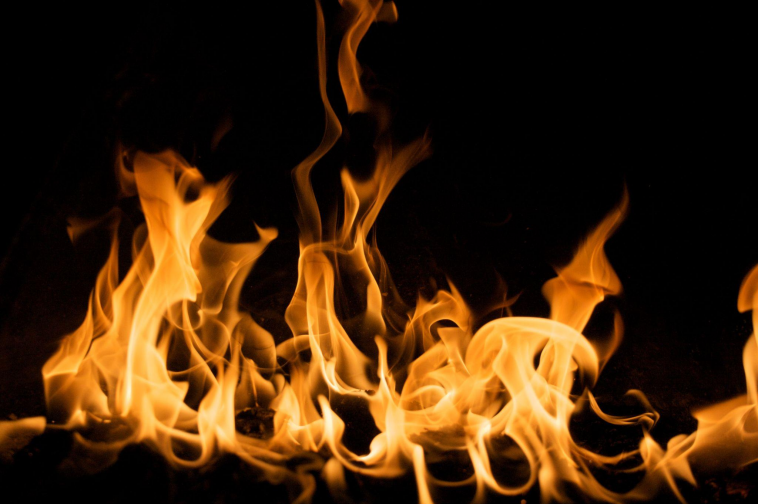On average, a fire department responds to a fire every 23 seconds. One fire-related injury occurs roughly every 47 minutes. While this may sound terrifying, it’s even more problematic to acknowledge that no one is safe.
In an ideal world, every single one of these fire disasters would be caused by negligence. If that were so, all you would have to do is not be negligent, and the problem would be solved, right? Well, not exactly. It takes just one second of negligence to undo years of safe behavior, but some things are just out of our control.
To avoid falling into fatalism, here are the top five safety rules that can significantly improve your odds of avoiding a disaster.
-
Clear Path to the Fire Exit
Escaping is the go-to solution if we’re just talking about safety. This ignores potential escalation and property damage but gets you out of harm’s way. If there’s a fire exit nearby and you have a clear path to it, you can choose to survive, regardless of other consequences. This is also something to remember when building your next house or guest house.
To classify something as a fire exit, it has to lead outside the building. It needs to be large enough for every person inside the building. Most importantly, it needs to be unlockable from the inside. The most important thing is that you keep the path unobstructed. You never know when you’ll need it, so it must be unobstructed 100% of the time.
Therefore, you must resist the urge to decorate your exit route, even during Christmas. Also, placing flammable objects (even plants) near the exit is ill-advised.
While everyone who spends time there knows where the exit is, there’s nothing wrong with posting an exit sign (just in case).
-
Working Fire Alarms
Reaction time matters when it comes to staying safe in a fire disaster. Now, your reaction is heavily conditioned by your awareness. Seeing how you can’t rely on the idea that you’ll smell or sense fire, you need working fire alarms. To get there, you need to handle two steps. You need to buy a fire alarm and check its batteries from time to time.
Ideally, you would test it once a week, clean it once a month, and replace batteries at least once every year. The entire smoke alarm should probably be replaced once every ten years.
The process starts with the choice of the fire alarm. To do so, you need to make your own set of criteria. First, you need to determine the risks and threats that you’re realistically facing. Next, you need to take into consideration the building layout, as well as the size of the place. Finally, having a fire alarm monitoring feature could be a nice addition.
-
Functioning Fire Extinguishers
If you know how to use it, fire extinguishers can save lives and property. Their role in suppressing or completely putting out the fire can be invaluable. Sure, it’s safer to escape or wait for the fire department to arrive; however, this is not necessarily the best course of action. Sometimes, you can handle the situation on your own.
An office needs to have a fire extinguisher (mandated by law), every home should have one, and there’s even an argument that you should have one in your car. This way, you can prevent small fires from becoming unmanageable. This can save your vehicle and allow you to help others.
Fire extinguishers need to be recharged after every use. This is the rule even if they are not empty. Otherwise, their internal pressure may be compromised and ineffective the next time you use them. Even without using it, an extinguisher must be recharged every six years. As a whole, it should be replaced every 12 years.
-
Don’t Leave an Open Flame Unattended
This following rule is a common-sense one, but you would be surprised at just how many people choose to ignore it. You should never leave an open flame unattended. Sure, a bad installation can catch fire. The same could happen to a malfunctioning appliance (even if you don’t know it’s malfunctioning). With open fire, on the other hand, the threat is both imminent and obvious.
This is true indoors and outdoors alike. Before leaving the site, ensure you’ve put out the fire. If you have to go to the bathroom, turn off the gas stove and resume when you return. At the least, you can ask someone to look after it before you return. This is especially problematic since there’s usually flammable material all over in areas where there’s an open fire. For instance, you probably have some cooking oil nearby in the kitchen.
Being responsible is a habit that has no alternative. Even with all the renovation and improvement of your home, you can’t be safe if you’re not careful.
-
Make Sure Everyone Knows What to Do
The biggest problem with an open fire is that you never know when it could occur. Sure, if it happens while that one person who knows what to do is around, great. However, fire safety is a collective responsibility since fire endangers everyone. So, everyone in your household/workplace needs to know what to do in case of a fire.
The best way to keep them safe is to insist that they take a course with you and perform regular drills. Remember, the best way to protect someone is to teach them how to protect themselves. You have no other way of protecting them when you’re not around. Fortunately, fire safety is not complex, and it shouldn’t take too long to instruct your family or coworkers on the essentials.
Even these few essential tips can save someone’s life. So, there’s no excuse not to set aside some time and resources for this.
Wrap Up
In the end, by abiding by these five safety rules, you’ll increase your safety, the safety of your family/roommates/coworkers, and the safety of your property. Seeing how little effort it takes to abide by these five rules, there are no excuses not to do so.




